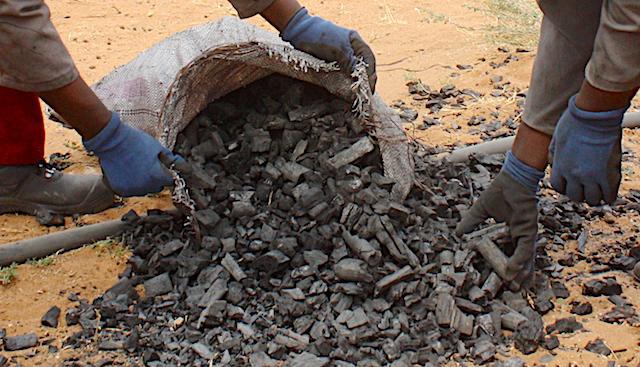‘Tjipangandjara’ is primarily concerned with showcasing the beauty and richness of the Ovaherero. The film takes us on a journey deep into an ancient way of life, exploring Ovaherero traditions, customs, and beliefs.
Through stunning shots of the Namibian landscape, we are transported to a world that is both familiar and alien. The intricate details of local attire and customs are captured on film, making for a visual feast that is as breathtaking as it is informative.
At the same time, ‘Tjipangandjara’ is a deeply moving film that explores universal themes of humour, loss and family.
The film is not without its flaws, however, as at times the pacing can feel a bit slow. Some scenes come across as a bit hollow and lacking the emotional depth that would have made them truly impactful. Additionally, the dialogue can feel stilted and unnatural at times, which can be distracting for viewers who are not familiar with Otjiherero.
It is interesting to note that the entire cast of the film are newcomers to the world of acting. This is remarkable, as it is difficult to pull off a successful film with a cast of inexperienced actors.
Certainly, the cast must have worked very hard to learn their lines and deliver them convincingly, and they must have had a great deal of trust in the director and each other, while working together on a project that was new to them all. They deserve a great deal of credit for their performance and ability to create believable characters and tell a compelling story, despite being new to acting.
Director Lesley Tjiueza said he’s had the idea for the film for over 10 years, and it was long overdue. He said he wanted to create a film that would showcase the beauty and resilience of the Ovaherero culture.
The film was shot entirely in Otjiherero, with the soundtrack composed by popular Namibian musician Big Ben.
It was well-received by audiences at the premiere, with some viewers praising the film’s authenticity and portrayal of culture, as well as its valuable contribution to the preservation of Ovaherero culture and language. The film was also praised for its beautiful cinematography and moving storyline.
Some called for local filmmakers to create more films in Otjiherero, to ensure that the language and culture are not lost, while others said it should be shown in more countries so that people all over the world could learn about the Ovaherero culture.
The film-makers did extensive research to ensure that the film was accurate, consulting with many Ovaherero elders and cultural experts.
Overall, ‘Tjipangandjara’ is a film that is well worth watching for anyone who is interested in learning more about the Ovaherero culture. It is a powerful and moving portrayal of a way of life that is both ancient and vibrant, and it is sure to leave a lasting impression. It is testament to the power of storytelling, and a reminder of the importance of preserving cultural traditions in a rapidly changing world.
Stay informed with The Namibian – your source for credible journalism. Get in-depth reporting and opinions for
only N$85 a month. Invest in journalism, invest in democracy –
Subscribe Now!










